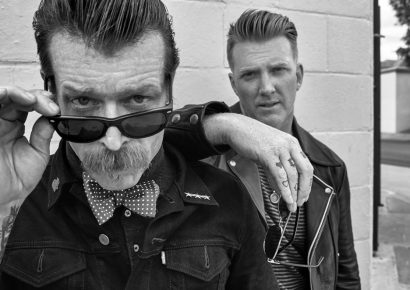Jazz has surrounded you your whole life. What led to the transition from playing to teaching?
I started playing very young, because my father’s very famous. Then when I was 19 I got my first job at the VCA – I did those classes for about 30 years. I thought there was a big hole with starting out. There are a lot of books that give you information but not really books that get you started or help from a musicians point of view. That’s what I’m trying to do. It was a very difficult task, but I certainly presented a book that’s really different.
You recently did a presentation of Start Playing Jazz Piano Now! at Bernies Music Land, and you’re returning to perform there in May. How constructive do you think the presentations are for aspiring jazz musicians? Is it simply about encouraging people to read the book and give jazz a try, or do you think they can learn something that’ll actually in uence their playing?
My first thing is to inspire and also spread the love of music, that’s the most important thing. Everyone has a natural ability when they perform, but they don’t trust that until a lot later or maybe not at all. So I flip everything around with the book. The thing with jazz is it’s the way you practice. You’re not practicing for a fixed outcome. You don’t know what the outcome’s going to be, so it’s about embodying all of the possibilities. And that’s what the book does, that’s what I do as a teacher – I try to inspire, make people aware that’s the process. The worst thing a participant can do is limit themselves in that process. It’s a very deep and slower process.
You refer to deep listening as an “integral part of your teaching and performance philosophy.” You also play with the Deep Listening Trio. Could you explain the concept of deep listening, and how it informs your teaching and playing?
Deep listening is a really indigenous way of knowing, which is just a different way of knowing. It’s not a big deal; it’s just a deeper way of working. From the performing perspective it’s about being sensory to what’s around you and using those elements in the room or perhaps onstage and trying to present that part of your performance, rather than present an act or an arranged outcome. It’s quite fun, but to get really good at deep listening comes from practice.
Perhaps it’s a clumsy analogy, but it seems like it’s similar to the art of conversation – which stems not from being a good talker, but from being a good listener.
Of course. Sometimes with music we prepare everything before we get there. I understand that if you do enough maybe you get there, but I don’t think it works that way – [not] with me anyhow or for most people. Performance, if you get it right and get people in tune. It’s very emotional. It’s very deep.
Jazz is often thought of as crucially reliant on feel and intuition and having “a gift” or natural aptitude. This suggests it can’t be taught, but you clearly believe it can be. In what way was that made apparent to you when you were learning jazz?
When it comes to learning, sometimes we’ve got to make it all like office work, you know – It’s all got to be organised. I don’t mind practising that way, but when it comes to performance I don’t want to present something as a teacher. I want to keep it fresh and exciting, like conversation. Sometimes you do stuff-up – that’s part of the process. Sometimes you do get lost – that’s part of the process. But the main thing is it’s got to be fresh, it’s got to be inviting and it’s got to be honest. You’ve got to be who you are; you’ve got to be comfortable in your own skin.
Steve Sedergreen will be performing live at Bernies Music Land on May 12. For more details, visit www.musicland.com.au.

